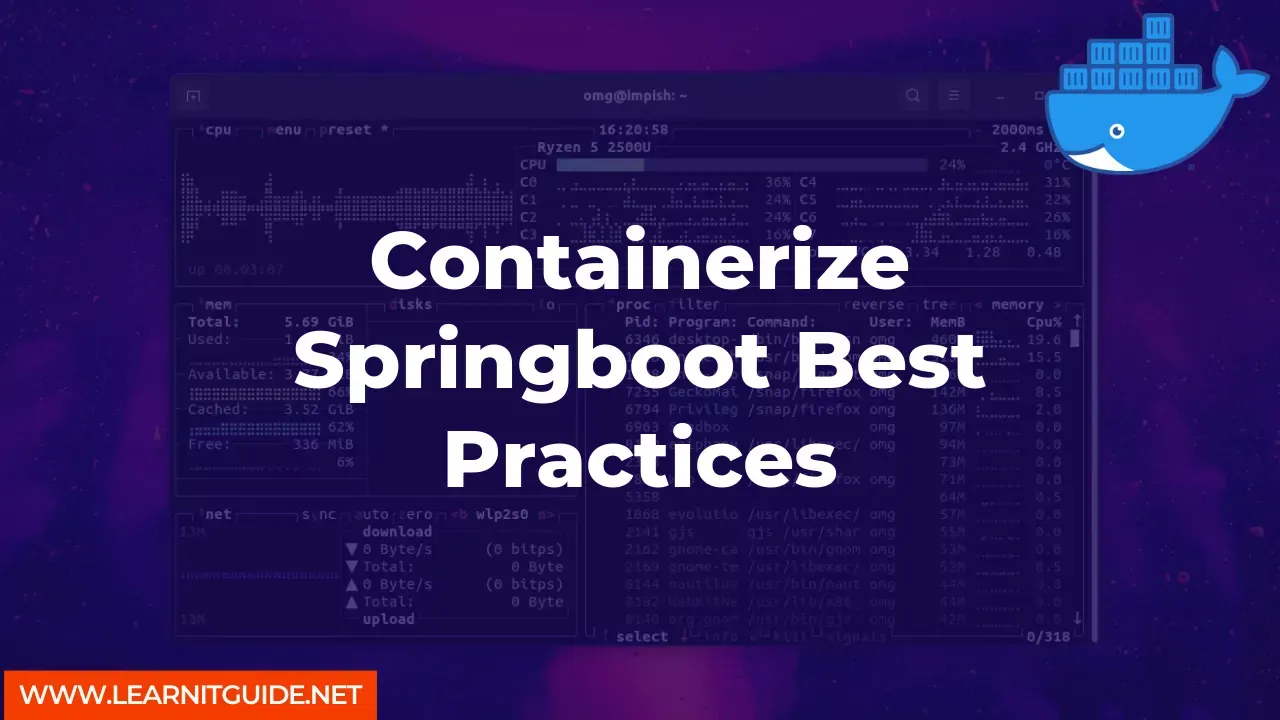In today's fast-paced world, containerization has become the norm for modern application deployment. It provides a scalable, efficient, and flexible environment that enables developers to manage and deploy their applications easily. Spring Boot, a popular Java framework for developing microservices, can also be containerized for efficient deployment. This article will explore the best practices for containerizing Spring Boot applications.
Prerequisites
- Docker installed on your system
- Basic knowledge of Spring Boot
- A Spring Boot application to containerize
Step 1: Create a Dockerfile
A Dockerfile is a blueprint that tells Docker how to build an image. To containerize a Spring Boot application, you need to create a Dockerfile that includes the necessary dependencies and configurations. Here's an example Dockerfile:
FROM openjdk:11-jre-slim
WORKDIR /app
COPY target/myapp.jar myapp.jar
ENTRYPOINT ["java","-jar","myapp.jar"]
In this Dockerfile, we're using the OpenJDK 11 runtime environment as the base image. We set the working directory to /app, copy the Spring Boot JAR file to the working directory, and set the ENTRYPOINT to run the JAR file.
Step 2: Build the Docker Image
Once you have created the Dockerfile, you can build the Docker image using the docker build command. Navigate to the directory where the Dockerfile is located and run the following command:
docker build -t myapp:latest .
This command builds a Docker image named myapp with the latest tag (:latest) from the current directory (.).
Step 3: Run the Docker Container
After building the Docker image, you can run it using the docker run command. Run the following command to start the container:
docker run -p 8080:8080 myapp:latest
This command runs the myapp container on port 8080 and maps it to the host port 8080.
Best Practices for Containerizing Spring Boot Applications
Use a minimal base image
Using a minimal base image like Alpine Linux or OpenJDK slim can significantly reduce the size of your Docker image, resulting in faster image pulls and smaller attack surfaces.Optimize the Docker image
To optimize the Docker image, you can use multi-stage builds, where you build the application in one stage and then copy the executable JAR file to a smaller base image in another stage.Use environment variables for configuration
Using environment variables for configuration allows you to change the configuration of your application without modifying the code or rebuilding the image.Use volumes for data persistence
Using volumes for data persistence ensures that your application data is stored outside the container, making it easier to backup, migrate, and upgrade your application.Use a container orchestration platform
Using a container orchestration platform like Kubernetes or Docker Swarm allows you to manage and deploy your containerized applications at scale, ensuring high availability, load balancing, and auto-scaling.
Containerizing Spring Boot applications is a powerful way to deploy and manage microservices efficiently. By following the best practices outlined in this article, you can optimize your Docker images, improve your application's scalability, and simplify your deployment process.
Related Searches and Questions asked:
That's it for this post. Keep practicing and have fun. Leave your comments if any.







0 Comments